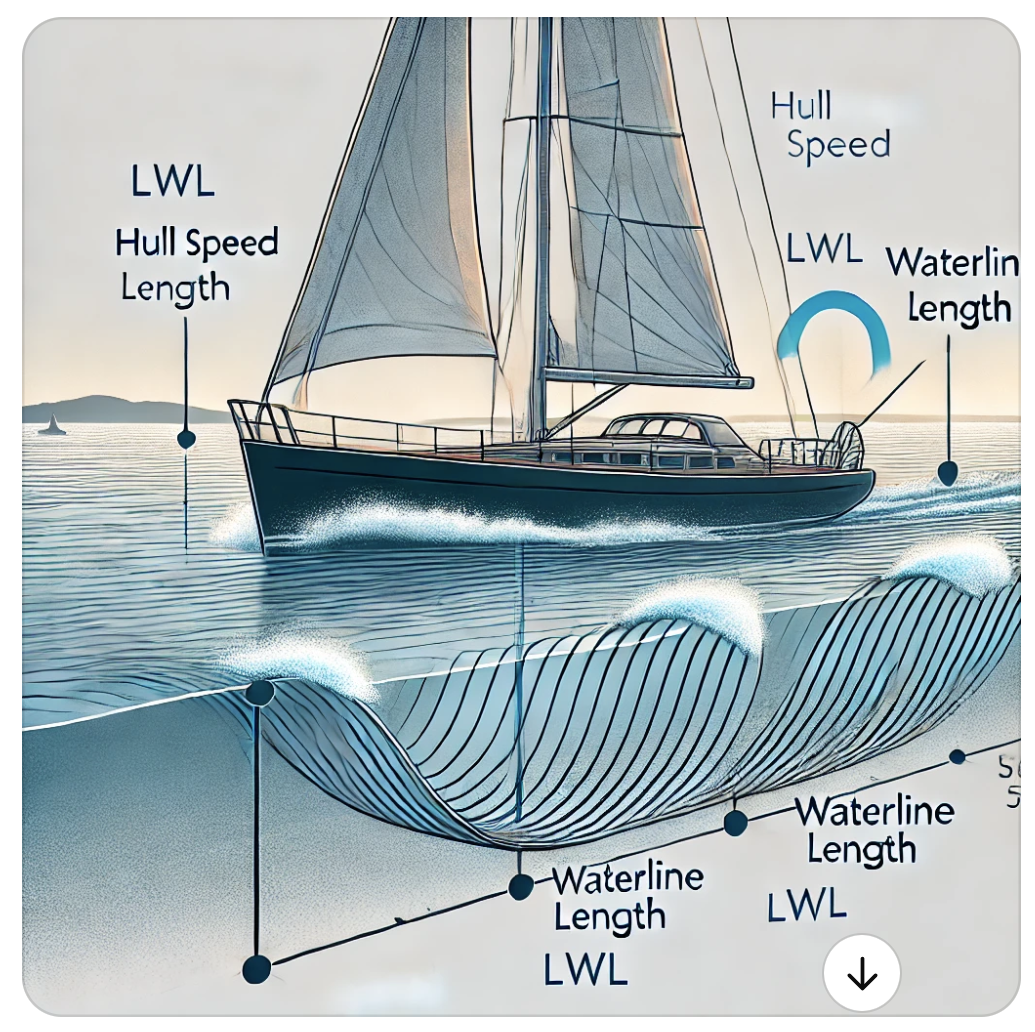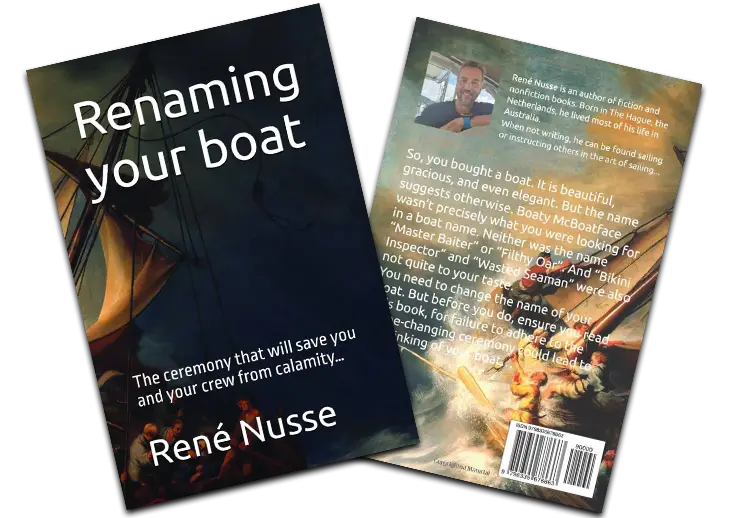Maximum Hull Speed?
The hull speed of any yacht is the theoretical maximum speed that a displacement hull can travel without planning. It’s a common term in the world of sailing and boating, and the boat’s waterline length forms the basis of it. The formula to calculate hull speed (in knots) is:

Where:
LWL Is the waterline length of the yacht in feet?

The diagram above illustrates the concept of hull speed. Hull speed or displacement speed is the speed at which the wavelength of a vessel’s bow wave is equal to the waterline length of the vessel.
To add more detail to the concept of hull speed, let’s expand on the critical elements in the diagram:
Waterline Length (LWL): The length of the yacht’s hull in the water. It’s crucial because hull speed is directly related to this length. The longer the waterline, the faster the potential hull speed. The formula uses the square root of the waterline length to calculate the maximum hull speed.
Bow Wave and Stern Wave: As your yacht moves, it creates a wave at the bow (front) and the stern (back). The faster the yacht goes, the more significant these waves become. At hull speed, the yacht gets “stuck” between these two waves, making it difficult to go faster without exponentially increasing power. The yacht sits in the trough between these two waves at its maximum hull speed.
Wave Pattern at Hull Speed: The distance between the bow and stern waves is almost equal to the waterline length at the yacht’s hull speed. The yacht rides up on the bow wave while the stern sinks deeper into the water, forming a noticeable wave trough at the middle of the hull. This is why pushing your yacht beyond hull speed requires significantly more energy unless the yacht starts to plane. (see movements of a yacht)
Planing vs. Displacement Hulls: The concept of hull speed primarily applies to displacement hulls, designed to cut through the water rather than ride on top of it. On the other hand, planing or foiled yachts can exceed hull speed because they rise and skim along the surface of the water, reducing the drag caused by the waves.
Energy Required to Exceed Hull Speed: As your yacht approaches hull speed, the resistance from the water increases exponentially. Beyond this point, a displacement hull yacht would need immense power to go faster. This is why most sailboats with displacement hulls have a relatively fixed maximum speed unless equipped with significantly more powerful engines or designed to plane.
In summary, when your yacht moves through the water, it creates a bow and a stern wave. When your yacht sits nicely between these waves, we call it maximum hull speed. To go faster, we must push our yacht “uphill” against our bow wave. The more we exceed our yacht’s maximum hull speed, the bigger this bow wave is and the more “uphill” we need to push our yacht. This, of course, results in an exponentially terrible fuel economy.
Hull Speed Calculator
Enter the Waterline Length (LWL) in feet to calculate your hull speed:

NAVIGATION RULES CLINIC + BASIC SAIL TRIM COURSE
Author
-

Rene is a keelboat instructor and sailing coach in the Mandurah area WA. He is also the author of several books about sailing including "The Book of Maritime Idioms" and "Renaming your boat".
View all posts


